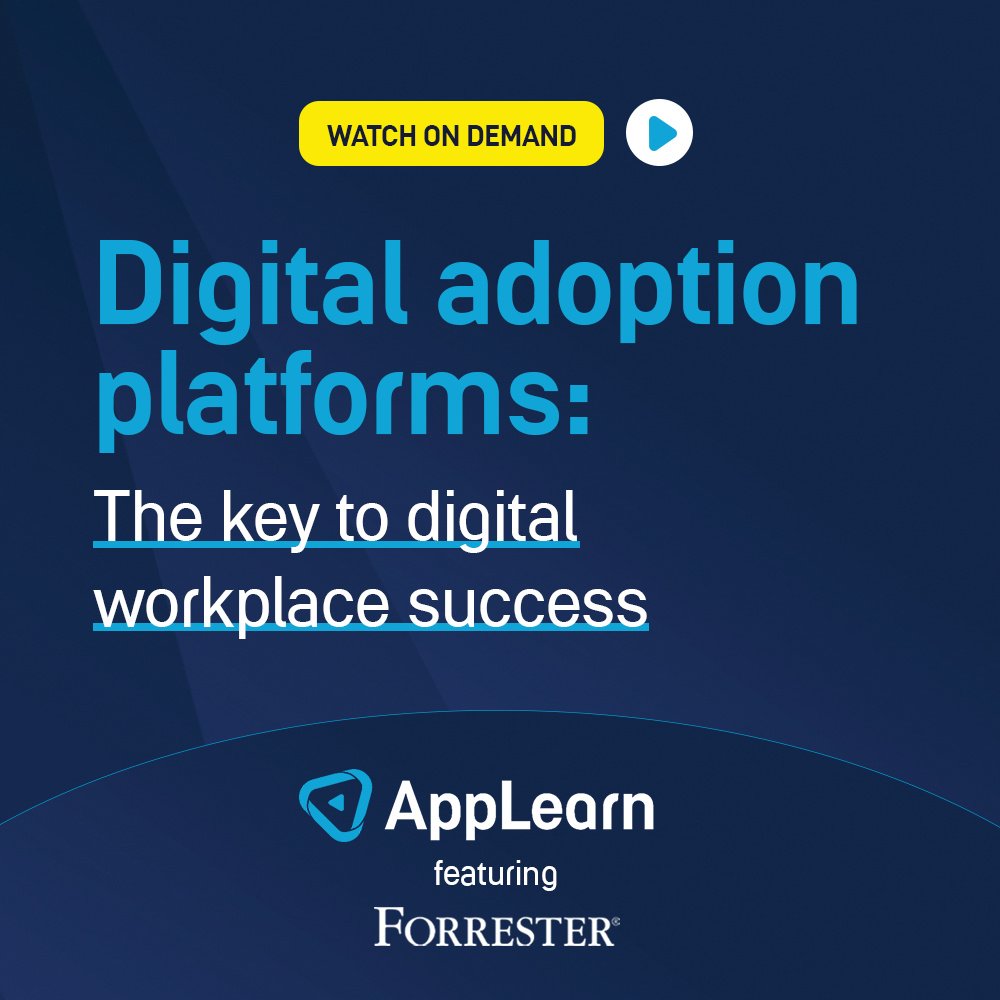News
What is a DAP Center of Excellence?
What is a DAP Center of Excellence?
Across a digital landscape that has transformed how business happens, the modern workforce has more tools at its disposal than at any other time in history. Intuitive and versatile though these tools and applications often are, their sheer volume has turned the average work day for many into a labyrinth of different interfaces, features, and user journeys.
Against this backdrop, Digital Adoption Platforms (DAPs) have emerged as a powerful solution, enhancing digital user experience (DEX), streamlining software adoption, and maximizing operational efficiencies. By offering interactive guidance and support directly within applications, DAPs solve critical problems, such as low software proficiency, resistance to change, and the underutilization of enterprise technology investments.
However, optimizing the potential of DAPs is a journey in itself. Organizations worldwide that have implemented a DAP have learned that to truly unleash their power, it is necessary to develop DAP Centers of Excellence.
In this blog, we explore the concept of a DAP Center of Excellence, what they are, how they can be established and advanced, and why your organization should view Centers of Excellence and DAPs as two sides of the same coin.
DAPs are at an Inflection Point
According to research by Forrester, by 2027, 31% of global technology expenditure will be directed at software. Moreover, 66% of technology decision-makers state that they intend to increase investment in digital employee experience (DEX) software over the course of 2024/25. DEX software, designed to enhance how employees interact with their workplace technology and environment, most commonly comes in the form of a DAP.
This upward spend on DAP technology can be explained by the rise of IT estates that comprise a blend of market-ready and highly customized, business-specific software. In isolation, these solutions offer great promise, but they also stand in the way of seamless digital transformation journeys that must account for the likes of growing operational complexities and an increase in remote working.
In short, there is an urgent need for a layer that sits on top of these intricate arrangements of software and applications that can enhance DEX, boost productivity, and accelerate business performance.
Enter the DAP Center of Excellence
As opposed to the various tools and toolkits the market has to offer, which provide little in the way of interactivity, DAPs focus on user journeys and workflows. They bridge gaps in insight, displaying where over- or under-investment occurs in applications, whether applications are being used correctly, and if application usage aligns with compliance demands.
With the financial and regulatory stakes so high, a Center of Excellence framework becomes essential. Apart from creating seamlessness across digital transformation, a Center of Excellence allows a central governance layer to be built around multiple DAP projects and initiatives, with space to bring in expertise when required.
As well as a governance layer, a DAP Center of Excellence also creates a vital centralized guidance layer. With different applications all possessing different interfaces, analytics, chatbots, user journeys, and features, a DAP’s ability to provide personalized guidance at the right time is supercharged. This is especially true when a Center of Excellence supplies the knowledge needed to leverage this guidance effectively.
Developing an Effective DAP Center of Excellence
Campaign, Maintain, and Explain
The starting point for a DAP Center of Excellence should comprise a ‘campaign, maintain, and explain’ approach.
Organizations can begin by rapidly delivering digital adoption in one application with a QuickStart campaign before future-proofing the process for what will become multi-application journeys. Using data-backed objectives and key results (OKRs), the initial use case can then be optimized and maintained to support users and build awareness.
By using analytics and AI to explain the benefits, organizations can begin discovering new opportunities and ways to unlock subsequent applications.
Build a Guiding Coalition
With the Center of Excellence foundations built, organizations should look to empower DAP advocates across the enterprise, with the training and resources needed to promote, identify, and evaluate use cases. This step should be undertaken in conjunction with developing a unified business case framework, which includes ROI calculators for cost, productivity, and engagement.
Wherever possible, the roadmap should be shared with key stakeholders across HR, employee experience, IT, security, and support desk.
Productize Delivery
At this stage, organizations should be ready to agree on an enterprise commercial framework with application owners, finance, procurement, and vendors. It’s advisable to publish a DAP service catalog to support the framework to clear a path for rapid application onboarding, route-to-launch, and business-as-usual support.
Reusable components can then be developed for identity and personalization, browser extensions, and analytics.
A Center of Excellence Framework is Key to Scale
It’s important to understand that DAPs are not entirely a DIY solution. They require dedicated, skilled resources to meet the pace of innovation challenges and to provide effective awareness and education.
The pace of innovation is also why any organization considering a DAP Center of Excellence should move quickly. Leaders know that when starting with a DAP, they must first walk into a cluttered application space. Starting immediately with a blueprint of objectives and critical tasks to be solved will determine the project’s complexity or simplicity. Time spent in this preparation phase is time saved further down the line.
Scaling a DAP with a Center of Excellence requires the development of roadmaps across journeys and systems within those journeys. Cross-functional competencies are also needed to unite people and objectives, with centralized governance established to identify best practices and use cases and scale seamlessly.
Throughout the process of implementing a DAP and building a Center of Excellence to unlock its potential, there is a critical requirement that should underpin everything: executive buy-in. When the entire C-suite recognizes the value of a DAP initiative and all that it entails, that's when the full force of its capability delivers the most formidable results.
To achieve this, make sure DAP and Center of Excellence objectives align with core business objectives. Remember, neither a DAP nor a Center of Excellence is designed to solve just stakeholder problems; both are designed to solve problems that impact every area of the business.
Article by
Adam McVey
Share this article






